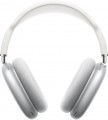Noise cancellation
A system that reduces the influence of ambient noise on the audibility of sound through headphones. "Noise reduction" with the help of a separate microphone (or several micro) "listens" to external sounds and sends the same sounds to the headphones, but in antiphase. Due to this, the noise heard by the ears is attenuated almost to zero and the user can enjoy the sound of the headphones without interference even in a rather “loud” environment. For filtering in headphones, Active Noise Cancellation (ANC) and Environment Noise Cancellation (ENC) systems are used. The first suppresses all the noise around the listener, the second - reduces the noise level of the environment.
Active noise cancellation affects the purity of the sound, but the noise from the outside spoils the picture when listening to audio tracks even more.
Also in the headphones there is an adaptive active noise reduction system Adaptive ANC, aimed at automatically adjusting the sound of the headphones depending on the level of ambient noise. In a noisy environment (for example, when traveling on the subway), the Adaptive ANC system enhances the work of “noise reduction”, in the absence of loud sounds from outside, it weakens the noise reduction.
Multipoint
A technology used in Bluetooth models (see "Connection") that allows the headphones to connect to multiple devices at the same time. Thanks to this, you can, for example, listen to music from a laptop, and when a call comes in on a mobile phone, switch the headphones to a conversation. This technology has its own characteristics for different manufacturers, and therefore, if the
multipoint function is critical for you, you should separately clarify the details of its operation in the selected model.
Charging port
The type of connector used to charge the built-in battery of the headphones, or more precisely, to connect an external charger. The role of such a device can be played by a network or car adapter, a power bank, or even a USB port of a PC or laptop (if there is an appropriate cable). At the same time, in true wireless models (there are
with a leg,
without a leg,
with an ear mount and
clips (Clip-on)), the "charger" cable is connected to a special docking station, where the "ears" are placed during charging (while the station itself usually has its own battery and can also work as an autonomous power bank). And in wireless and combined solutions of a more traditional design, the charging input is often located on the body of the headphones themselves. As for the connectors, the most common options are the following:
—
microUSB. A smaller version of the USB connector, created for portable devices. It appeared quite a long time ago, but it has not lost its popularity in our time, and is used by the absolute majority of manufacturers.
—
USB C. A miniature USB connector, positioned, among other things, as a potential successor to microUSB. Unlike its predecessor, it has a two-sided design, thanks to which the plug can be inserted into the socket from either
...side. It is still relatively rare, but the situation is likely to change in the coming years.
— Lightning. Apple's proprietary connector. Like USB C, it has a two-sided design, and is somewhat more convenient and reliable, but the use of Lightning is limited to products from Apple itself and its Beats brand.Weight
The total weight of the headphones; for true wireless models (see "Cable Type"), the weight of each individual earbud is listed.
This parameter is directly related to the design (see above) and some features of the functionality. Thus, the mentioned true wireless devices are very light, their weight
does not exceed 25 g. More traditional in-ears and in-ears can be noticeably heavier,
up to 50g for in-ears and up
to 100g for most in-ears. Overhead models, for the most part, are quite massive: among them there are many models weighing
200 – 250 g,
250 – 300 g and even
more than 300 g. It should be noted that a significant weight for false ears is often not a disadvantage, but an advantage: it allows them to stay on the head more securely, creates an impression of solidity and reliability, and most often does not create significant inconvenience.

